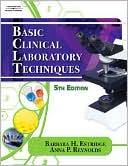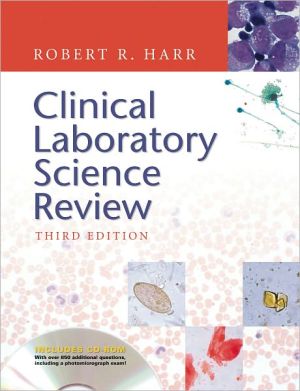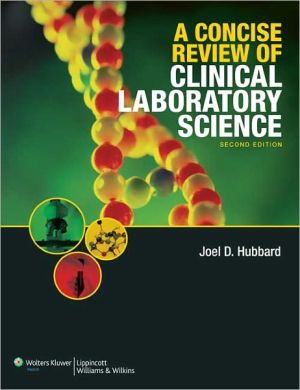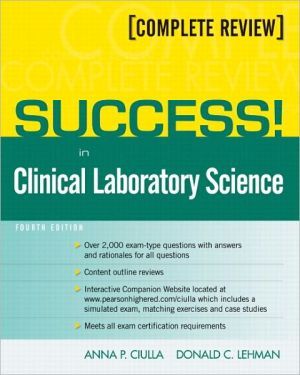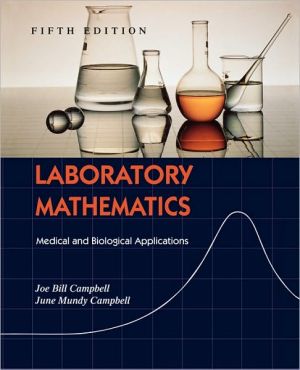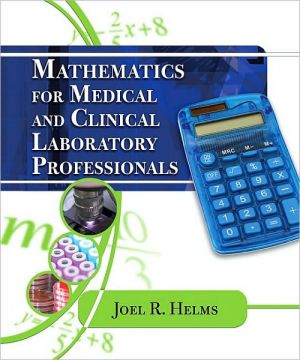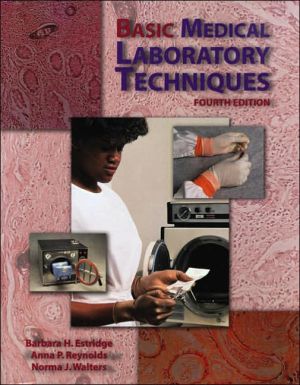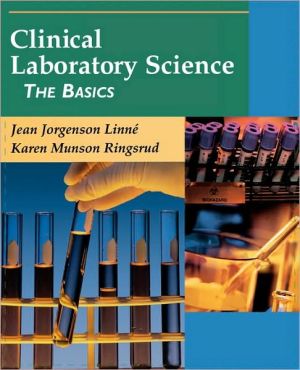Basic Clinical Laboratory Techniques
Search in google:
This newly revised, performance-based text covers the theory and techniques of basic clinical laboratory procedures. Workers in physicians' office laboratories, small clinics, hospital laboratories, public health departments, and point-of-care testing facilities will find this guide a useful resource covering the procedures they perform. The procedures are presented in an easy-to-follow format that includes a step-by-step performance guide and worksheets when appropriate. Procedures include CLIA-waived tests as well as some more complex tests, and incorporates current CLIA and OSHA safety regulations. Basic Clinical Laboratory Techniques is a comprehensive guide for all laboratory technicians who want to review the essential laboratory techniques. Doody Review Services Reviewer:Valerie L. Ng, PhD MD(Alameda County Medical Center/Highland Hospital)Description:This is the fifth edition of a widely used reference introducing students to the fundamentals of clinical laboratory science. New to this edition are updated information, the liberal use of color figures/photographs, standardized alerts for safety issues, critical thinking exercises, and web-based activities to augment the text.Purpose:The purpose is to provide "the foundation of theory, skills and techniques required for understanding and performing routine laboratory tests." These are definitely worthy goals and this book nicely meets them.Audience:The intended audience includes medical laboratory technician or medical assistant students, anyone taking an introductory course in clinical laboratory science, and anyone performing point of care testing (POCT) in physician office laboratories. This book might also be useful to nursing, medical, and allied health students in their first or second year of training. (It would not be useful to those further in their careers as the information is indeed introductory and elementary.) Features:This is a great book for introducing students to clinical laboratory science. The text reads well and is easy to understand. Each chapter follows the same layout, with learning goals stated at the beginning, case studies interspersed, a final summary and review questions at the end, followed by recommended student activities and web based activities. Many of the chapters have student assessment checklists at the end to judge student competency. Often included are laboratory procedures so well written and easy to follow that I want to use them to replace procedures in my own laboratory. This is an excellent teaching tool with lesson plans already designed and ready to implement. Instructive color pictures leave absolutely no doubt as to how to perform the various test procedures. There are a few negatives. The most glaring is that this softcover book is big and floppy with pages as thin as newsprint. It will undoubtedly be used a lot during the course and it may not hold up to lots of handling. The pages likely will not survive drips or spills, and I've already ripped off at least one of the covers just reading it for this review. (On the flip side, a heavy and more substantial book would be too heavy to carry back and forth from class and home.) There is a chapter on bleeding times, a test pretty convincingly demonstrated to have little if any clinical utility, so why keep teaching it? But these are very minor concerns for an otherwise wonderful introductory book.Assessment:This is a great introductory textbook on the fundamentals of clinical laboratory science for those non-clinical laboratory scientists who will be performing common laboratory tests in their careers.
Unit 1: Introduction to the Clinical Laboratory. Unit 2: Basic Hematology. Unit 3: Basic Hemostasis. Unit 4: Basic Immunology and Serology. Unit 5: Urinalysis. Unit 6: Basic Clinical Chemistry. Unit 7: Basic Clinical Microbiology. Unit 8: Basic Parasitology. Glossary. Appendices. Index.
